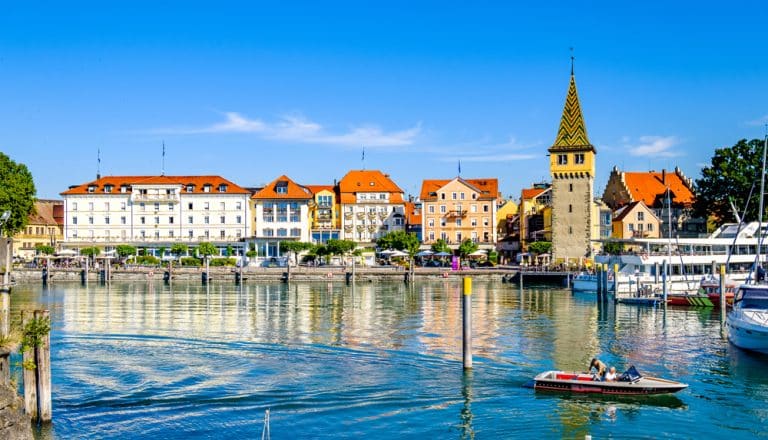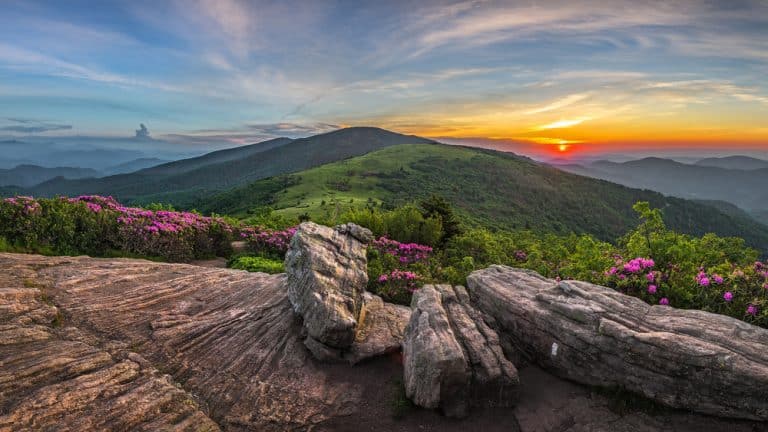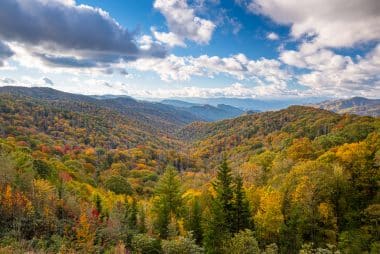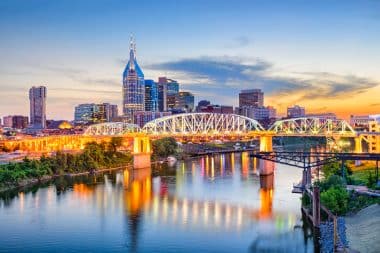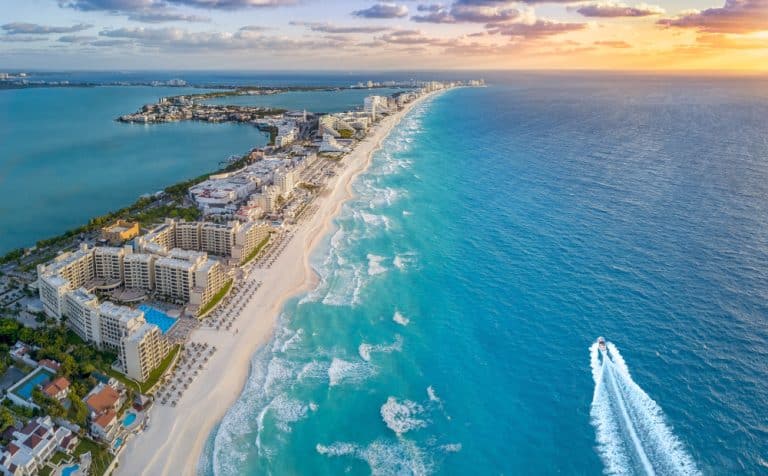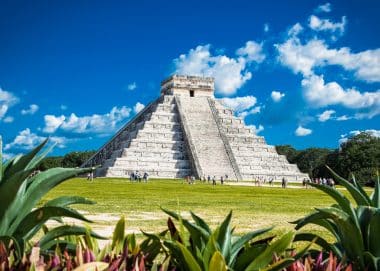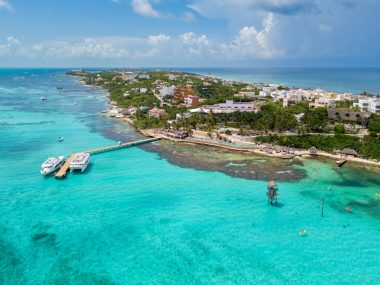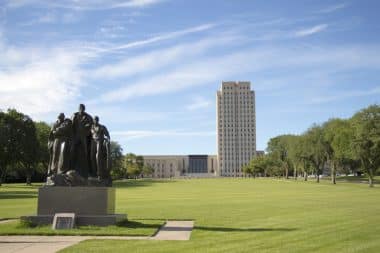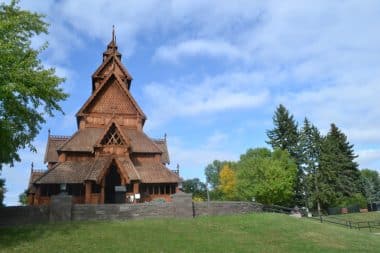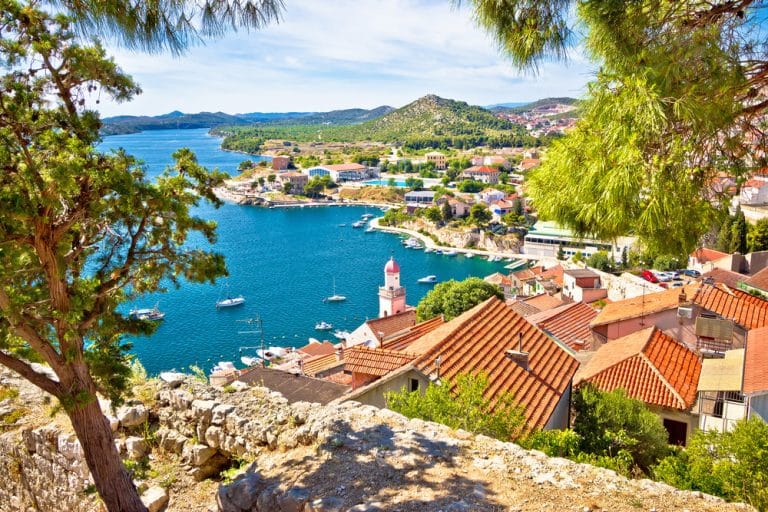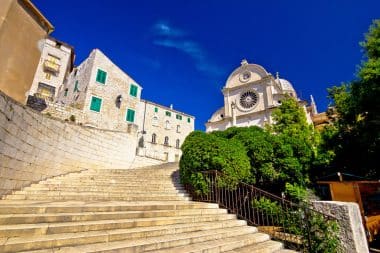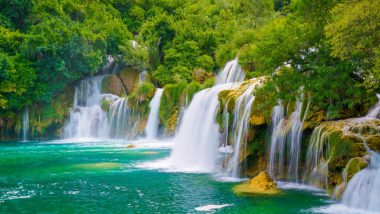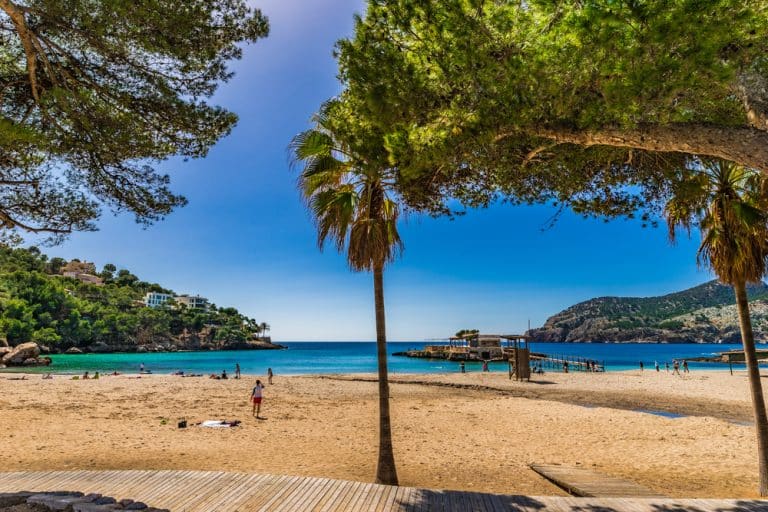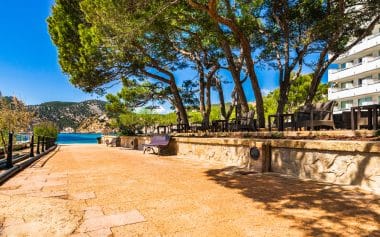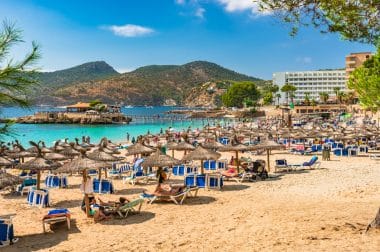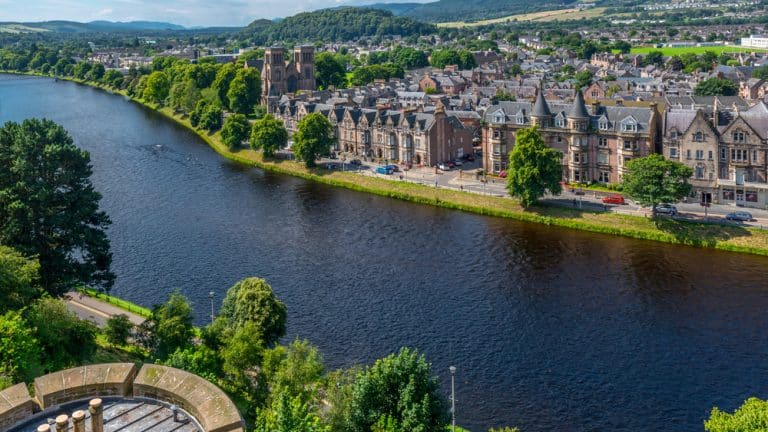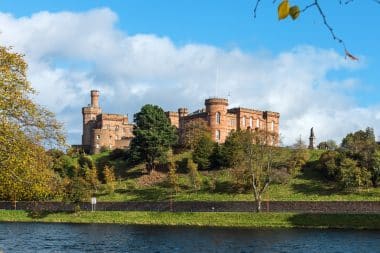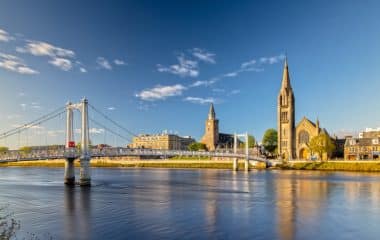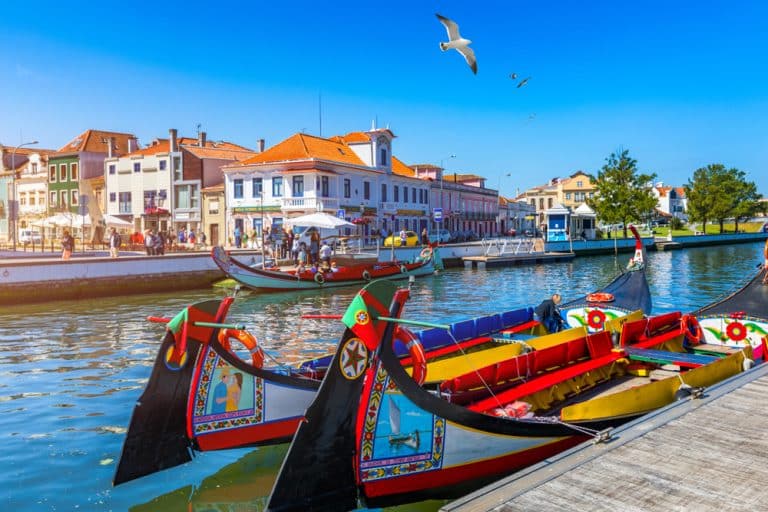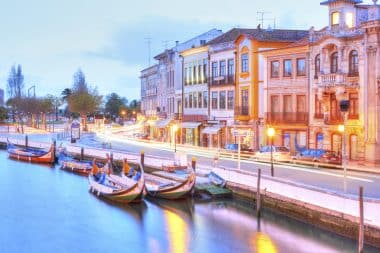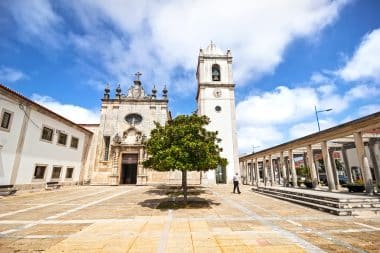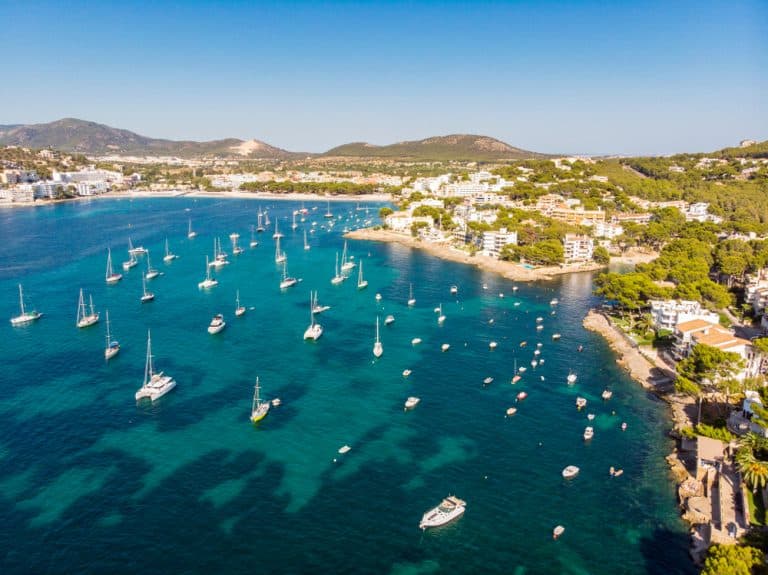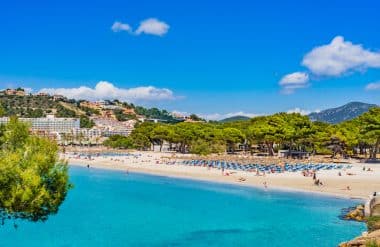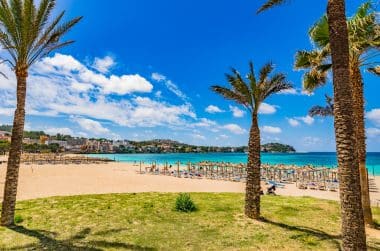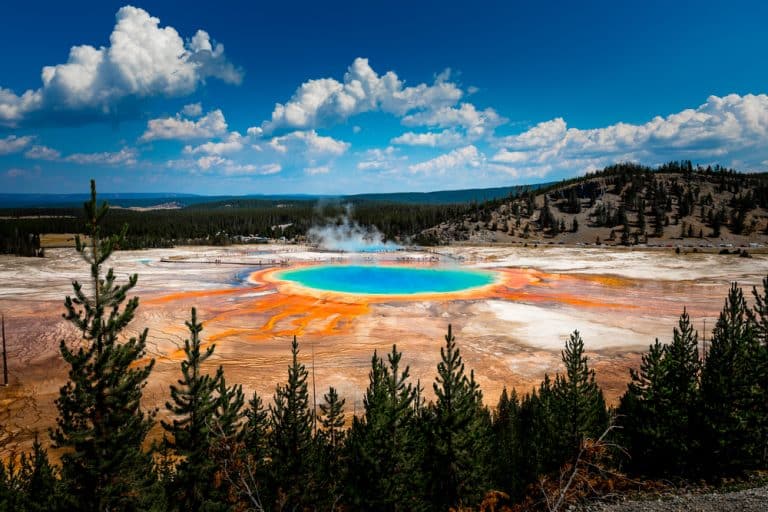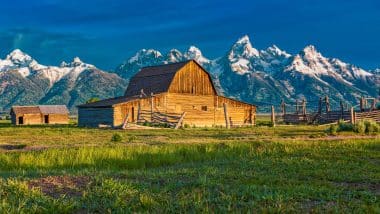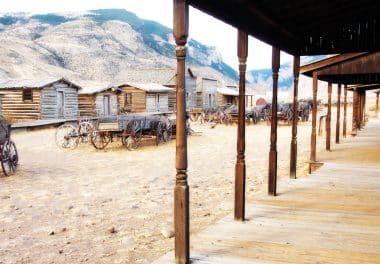The district town of Lindau is located at the eastern end of Lake Constance, the so-called border triangle, and belongs to the Bavarian administrative district of Swabia. The former free imperial city is characterized by its location in Lake Constance and an impressive Alpine panorama.
The Island City
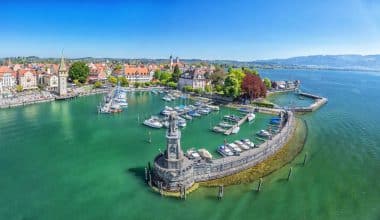
The old town of Lindau rests on an island that is connected to the mainland by a bridge and a railway embankment. The cityscape of the former free imperial city is largely intact and is a listed building.
The famous harbour entrance is considered the city’s landmark. It is dominated on the west side by a striking lighthouse from 1856. On the east side, the six-metre-high statue of the Bavarian lion forms the end of the harbour pier. The marble lion stands on a 3-tiered pedestal and looks towards the Swiss shore. The island city was built in the 12. and 13th century surrounded by a mighty city fortification. The Mangturm from 1200 is one of the oldest defensive towers. The city wall was reinforced by redoubts, such as the Karlsbastion, the Lindenschanze and the Maximiliansschanze.
Maximilianstraße runs through the island as a main street and part of the pedestrian zone. It reflects the medieval character with bourgeois and craftsmen’s houses. In the ensemble from the 16. and In the 17th century, the original arcades, dormers and carved window pillars can be found.
Imposing buildings
The Old Town Hall from 1422 bears witness to its former splendour with its façade paintings made of motifs from the city’s history. The main façade is crowned by a stepped gable and bells at the top. Access is provided by a covered outdoor staircase with bay window.
The 20-metre-high Mangturm from the 12th century marks the end point of the city wall on the lakeside promenade. Until the 19th century, it could only be reached via a drawbridge and served as a lighthouse. The round Thieves’ Tower from 1380 has a pointed cone helmet with four six-sided corner turrets and was used as a prison for a long time.
The Haus zum Cavazzen from 1729 is considered one of the most beautiful town houses on Lake Constance and today houses the city museum. The city station on the island was built in 1853 in Art Nouveau style and is one of the most impressive terminus stations.
Charming and worth seeing
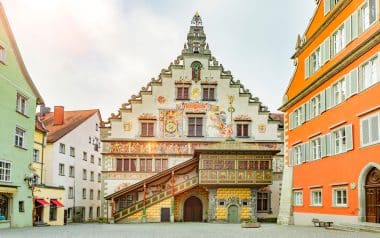
The Lindavia Fountain was built in 1884. Lindavia – the protector of the city – is enthroned on a pedestal with a lime branch in her hand. It is surrounded by four half-shells made of red marble and four bronze basin figures. These symbolize the original sources of the city’s wealth – shipping, fishing, viticulture and agriculture.
The Bavarian Riviera is the name given to a six-kilometre-long stretch of shore. Here, magnificent villas and manor houses with park-like gardens are lined up. They reflect the glory and power of the former patrician families.
The Bad Schachen lido from the 1920s bears witness to the time of bathing culture. It was built at the height of wooden bathing architecture on Lake Constance , as was the Aeschacher Bad from 1911 – a bathhouse as a pile dwelling.
Churches in Lindau
The historical development of the city goes hand in hand with the creation of the sacred buildings.
The oldest church is considered to be St. Peter’s Church on Schrannenplatz, which originally functioned as a fisherman’s church.
The cathedral of “Our Lady” from 1752 dominates the cityscape around the market square. The Baroque ceiling painting and the Rococo interior decoration are remarkable.
Also located on the market square, the Protestant church of St. Stephen from 1506 invites visitors. The three-aisled Romanesque pillar basilica inspires with its curved façade with a wrought-iron balcony. The 58-metre-high onion dome dominates the surroundings. In addition to the west gable, the former, cracked main bell can be admired as a monument.
Culture
The Lindau City Theatre offers performances of play, opera and ballet. The events of the Lindau Marionette Opera are considered attractions.
The Inselhalle as an event centre became famous through the annual Lindau Nobel Laureate Meetings. Away from the hall runs the Nobel Laureate footbridge, on the railing of which the names of all the laureates are published.
In addition to the City Museum, the Imperial City Library, the New Art Museum and the Peace Museum enrich the cultural offerings. Known beyond the city limits are the traditional children’s festival with flag and garland parade as well as the Swabian-Alemannic carnival with the legendary Narrensprung parade.
What to do in your free time in Lindau?
The magnificent pedestrian zone welcomes you to shop in small exclusive shops with high-quality fashion, books, pictures and handicrafts. On the mainland, the Lindaupark shopping centre with more than 40 shops and cafés awaits its guests. The Lindenhof Park, the Stadtgarten and the harbour promenade with their Mediterranean flair offer rest and relaxation.
Numerous swimming pools such as the Limare leisure pool, the Lindenhofbad or the Oberreitnau outdoor pool promise bathing fun. Active holidaymakers will be happy about the many opportunities for sporting activities. The area around Lindau can be explored on marked hiking trails. For bicycle and mountain bike tours, there are well-signposted cycle paths, some of which are connected to the Lake Constance Cycle Path. Friends of water sports can draw from the full range in Lindau.
In the winter months, there are ideal conditions for cross-country skiing and alpine skiing. The ice sports arena and the Lindau thermal spa provide variety and relaxation.
Excursions
The piers of the scheduled shipping are located at the harbour. From here, the boats of the White Fleet and the Lake Constance shipping companies regularly head for the cities of Rohrschach, Constance and Bregenz . Passengers have the opportunity to get to know Lake Constance in all its grandeur and beauty.
Lindau’s central location in the border triangle creates the ideal starting point for sensational day trips. Worthwhile destinations include the Pfänder panoramic mountain, the island of Mainau and the Zeppelin Museum in Friedrichshafen.


